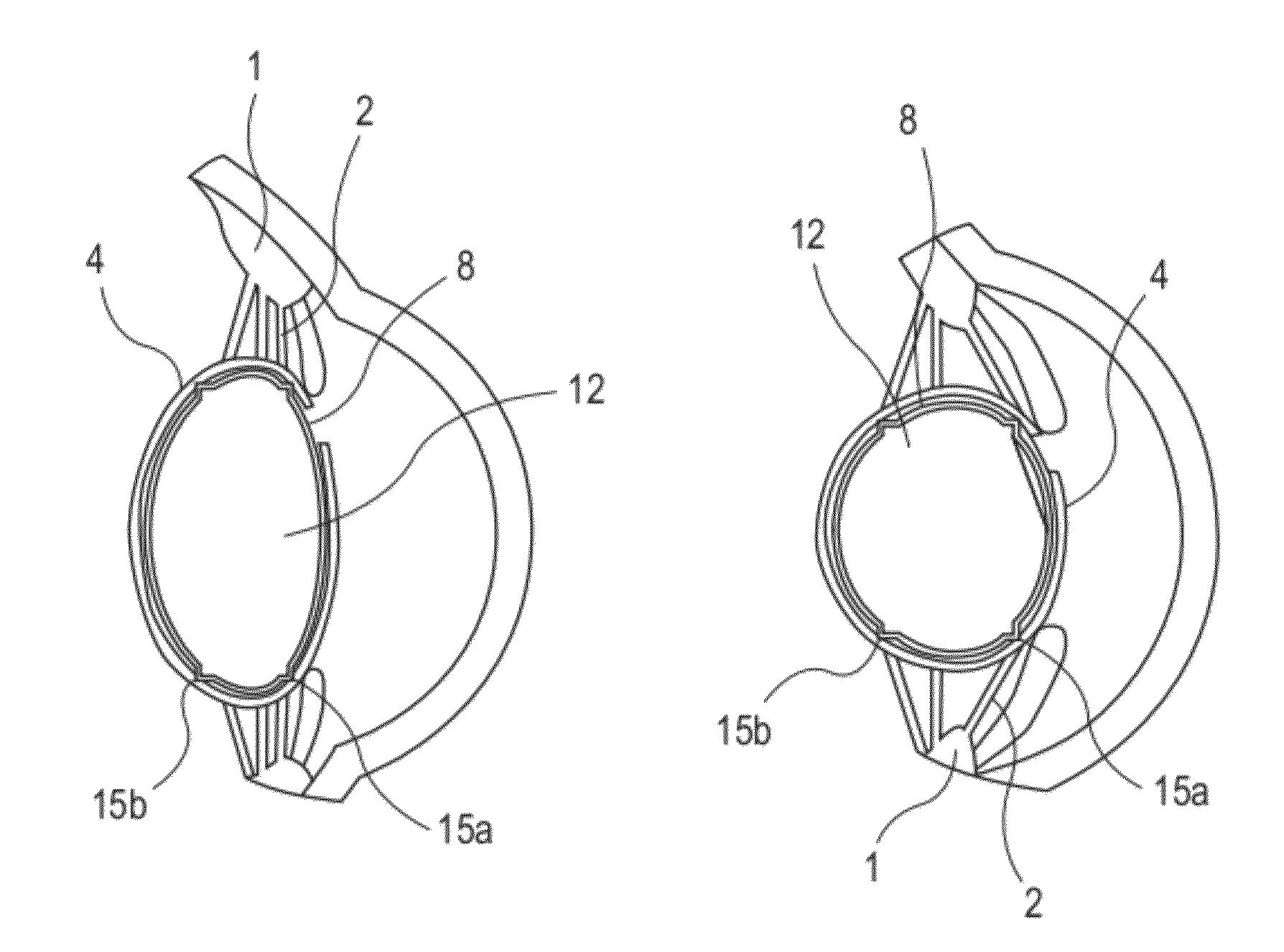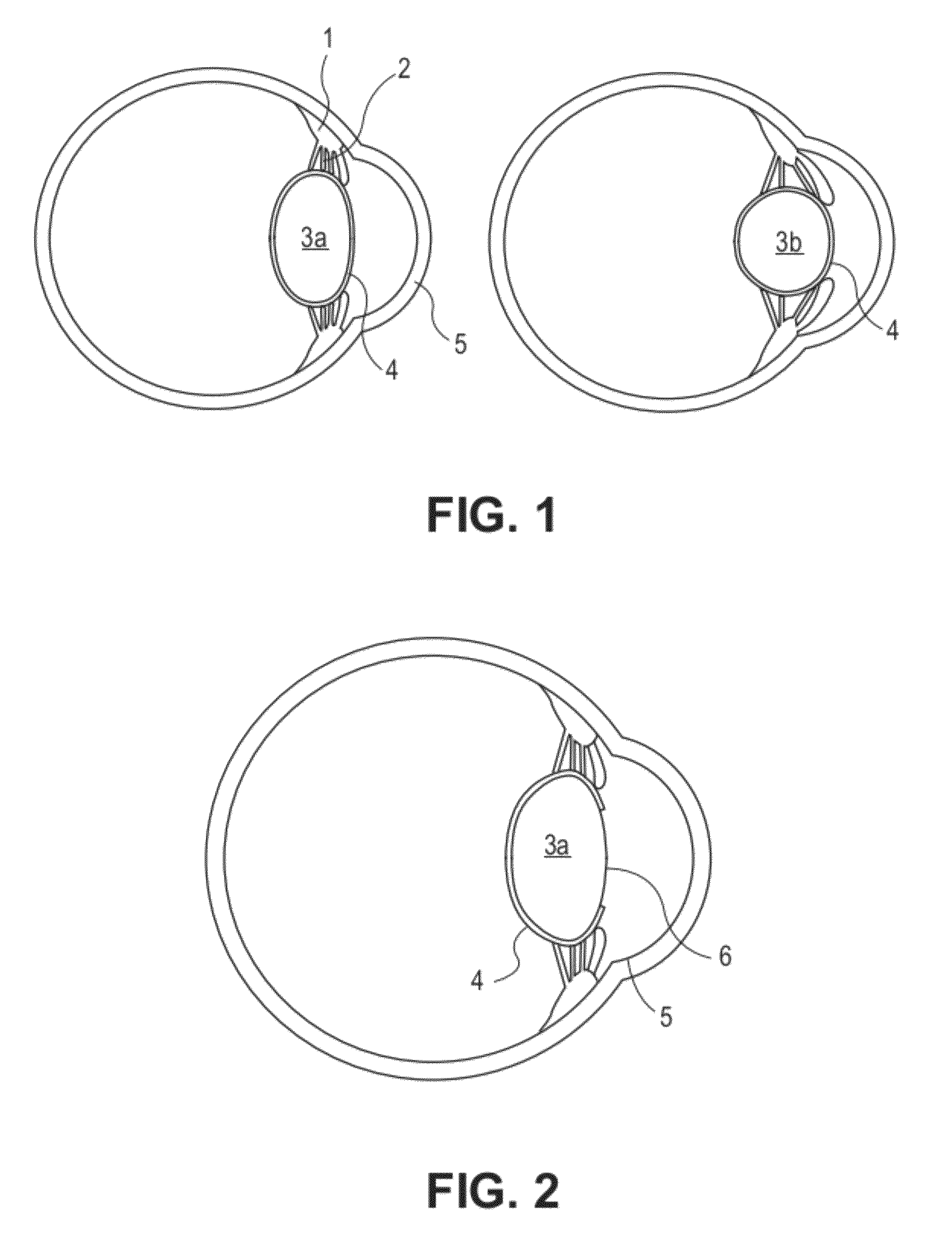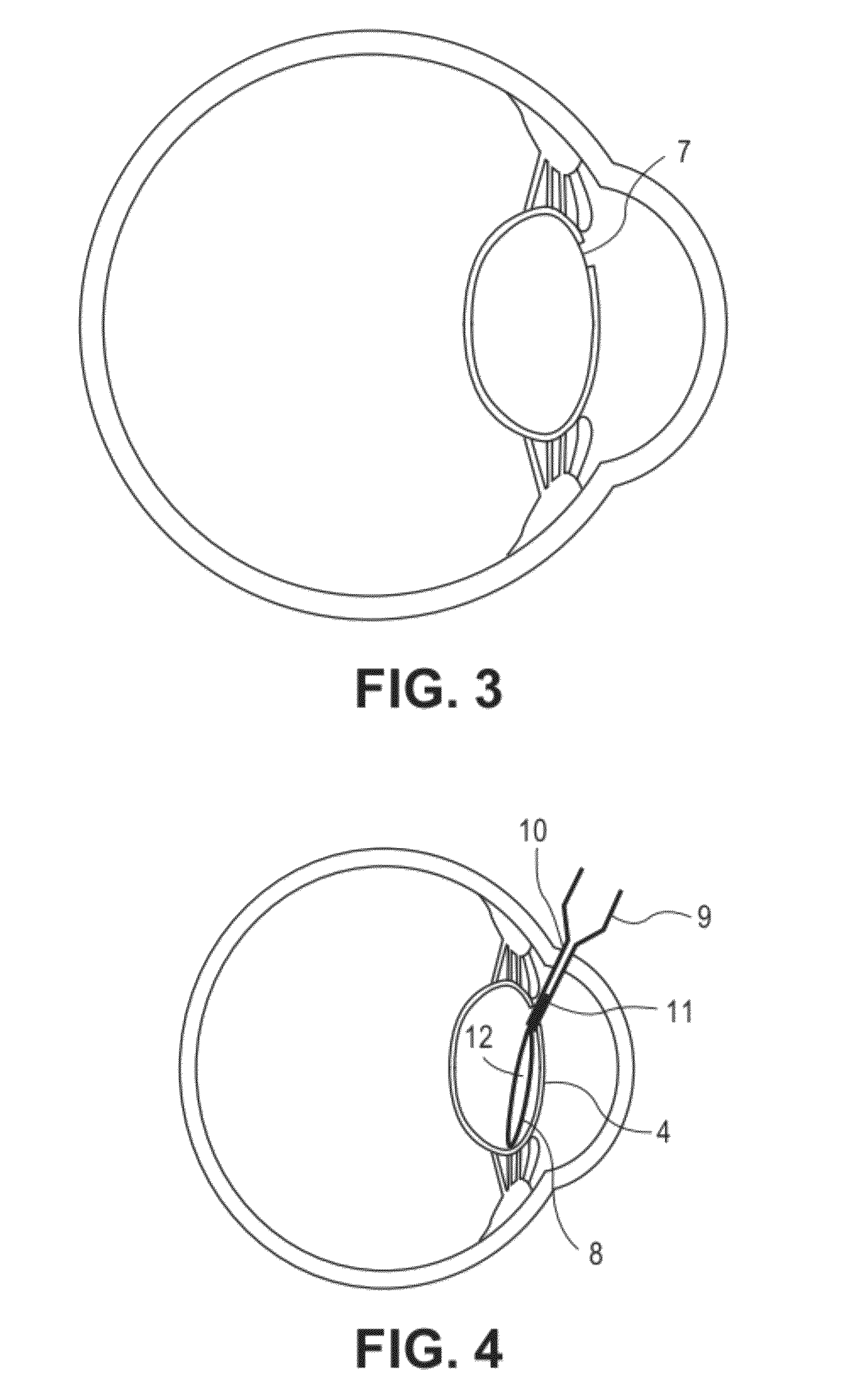Accommodating intraocular lens
a monofocal, intraocular lens technology, applied in the field of surgical implanted eye prosthesis, can solve the problems of hazy capsules, unable to focus eyes of patients with monofocal intraocular lens, and unable to achieve the effect of focusing eyes and bright colors
- Summary
- Abstract
- Description
- Claims
- Application Information
AI Technical Summary
Benefits of technology
Problems solved by technology
Method used
Image
Examples
Embodiment Construction
[0062]An injectable accommodating intraocular lens system is disclosed as well as devices and systems relating thereto. In various embodiments, the lens is constructed to form a flexible, thin, biocompatible bag. During surgery, the bag is filled with an optically clear medium, such as silicone fluid. During insertion into the lens capsule of the eye, the intraocular lens has little or no medium in it in order to reduce its overall dimensions, allowing insertion through a small surgical incision. After insertion, the intraocular lens is inflated with the clear medium to a target dioptric power. Once inserted, the accommodating intraocular lens deforms in response to the natural focusing mechanism of the existing ciliary muscle to change focus in a manner similar to a human lens.
[0063]Because of its ability to fit through small incisions, the injectable accommodating intraocular lens can be used with minimally invasive surgical techniques, making recovery time for a patient more rapi...
PUM
| Property | Measurement | Unit |
|---|---|---|
| thickness | aaaaa | aaaaa |
| thickness | aaaaa | aaaaa |
| thickness | aaaaa | aaaaa |
Abstract
Description
Claims
Application Information
 Login to View More
Login to View More - R&D
- Intellectual Property
- Life Sciences
- Materials
- Tech Scout
- Unparalleled Data Quality
- Higher Quality Content
- 60% Fewer Hallucinations
Browse by: Latest US Patents, China's latest patents, Technical Efficacy Thesaurus, Application Domain, Technology Topic, Popular Technical Reports.
© 2025 PatSnap. All rights reserved.Legal|Privacy policy|Modern Slavery Act Transparency Statement|Sitemap|About US| Contact US: help@patsnap.com



